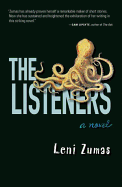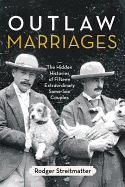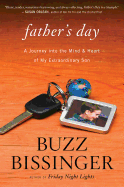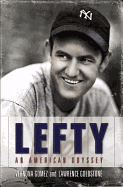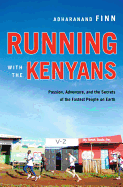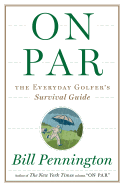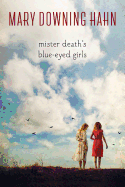On Tuesday we interviewed Craig Johnson about his latest mystery, As the Crow Flies. Johnson also had time to talk to us about his Walt Longmire novels being turned into a television show for A&E. The network has ordered 10 episodes, premiering June 3, starring Robert Taylor as Walt Longmire, Katee Sackhoff as Vic Moretti and Lou Diamond Phillips as Henry Standing Bear.
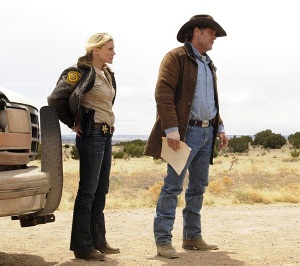 How involved are you in the television series?
How involved are you in the television series?
Well, it's kind of funny because all the other writers that I've spoken to pretty much said that, yeah, they will write you a check and then they will say "see ya" and that'll be the end of that, you won't hear from them again. Maybe you'll recognize what's on television when it comes on. And my experience was something completely different than that.
I think a lot of it had to do with the executive producers--Greer Shepherd, who was the big executive producer for The Closer and Nip/Tuck, and John Coveny and Hunt Baldwin. All these people that are involved with the show, they've really done good work. They were really concerned about making sure that they got the area right. It even got to the point where they hired my buddy Marcus Red Thunder as another creative consultant and brought him there for the filming of the pilot.
So I think it's all according to who you're working with, and I was very lucky to land with some really incredible people. They kept me in the loop throughout the entire process. They sent me DVDs of the actors that they were looking at for the roles, which is just crazy--they don't ever do that. They were two weeks into the process, and I get a phone call from them and they said, "We're having a real problem cutting your first book, The Cold Dish, down to 45 minutes." I said, "You are? My first draft was over 650 pages long. I can understand that. "
They said we had to come up with some other ideas, because if we get a go for this, it'll be 10-12 episodes for the first season. I've only written eight books. What they were wanting to do was take bits and pieces from the books and then elaborate from those to make the episodes. So I discussed with them which pieces would work in that kind of a format. Then they wrote the scripts and sent them for me to go through and change things, tell them about stuff, add things, or whatever, then ship them back to them. Then they brought us down there for the three weeks that they filmed the pilot episode.
Where did they film the pilot?
They filmed it down near Las Vegas and New Mexico and in Santa Fe, where they had sound stages and crews and that kind of stuff. They filmed it in March, which was kind of funny because when they were gonna go for the pilot, they sent Chris Donahue to Wyoming and Montana to scout locations, and he looked at them for a minute, and he goes, "When does this pilot take place, what time of year?"
They said late in the spring. He goes, "Well, have any of you ever been to Wyoming or Montana in March?" Nobody in Los Angeles could say yes, so he had to explain to them that it looked like a lot of things but it didn't look like early spring in March.
We flew down and spent the three weeks with them during the filming process. It was very interesting. It was very weird. You have something in your head for eight or nine years and all of a sudden there it is. I guess the closest way that I can describe it is like if you had a houseplant on your kitchen table for eight years and you came down to breakfast and it started talking to you. It was very wonderful but very weird all at the same time. But yeah, it's been a hoot to be involved as closely with the process as I have been, but it was something I certainly didn't anticipate in any way, shape or form.
 It sounds like a lot of fun, though.
It sounds like a lot of fun, though.
Yeah, it was. It's a really interesting cast. Really incredible people. Robert Taylor is playing Walt, Lou Diamond Phillips is playing Henry. Katee Sackhoff is playing Vic.
That's amazing right there.
Yeah, yeah. And Katee's a hoot. She's absolutely a hoot. We've been Twittering back and forth and all this kind of stuff. But she loves her character, and Robert loves his character, and Lou loves his character. It's kind of nice to have a cast that reads, because they all ran out and bought all the books. It's been very interesting to me, because I don't know how often that happens. It's very nice.
Sounds like an intelligent cast, which is helpful.
It is. Which is always what you hope for, right? --Rob LeFebvre
photos via AETV.com
Craig Johnson: Books into TV



 How involved are you in the television series?
How involved are you in the television series? It sounds like a lot of fun, though.
It sounds like a lot of fun, though.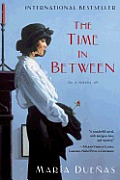 In Maria Duenas's sweeping novel
In Maria Duenas's sweeping novel 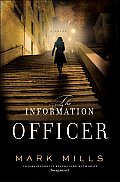 Set in the same era but in a far different place, Mark Mills's
Set in the same era but in a far different place, Mark Mills's 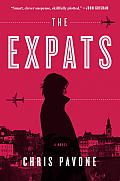 Kate Moore, the protagonist of Chris Pavone's debut
Kate Moore, the protagonist of Chris Pavone's debut 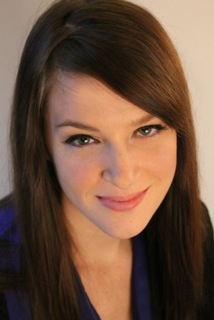 I'm coming out to the world: I just read--or should I say devoured--The Hunger Games. I can't continue to hide behind the more intellectual books on my nightstand. If people ask me what I'm reading these days, I quickly tell them 1Q84 by Haruki Murakami but simply forget to mention that I have secretly read each of the Hunger Games books, each in one sitting.
I'm coming out to the world: I just read--or should I say devoured--The Hunger Games. I can't continue to hide behind the more intellectual books on my nightstand. If people ask me what I'm reading these days, I quickly tell them 1Q84 by Haruki Murakami but simply forget to mention that I have secretly read each of the Hunger Games books, each in one sitting.